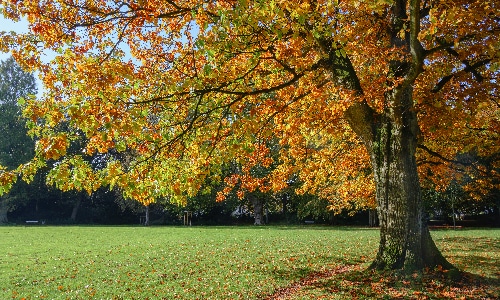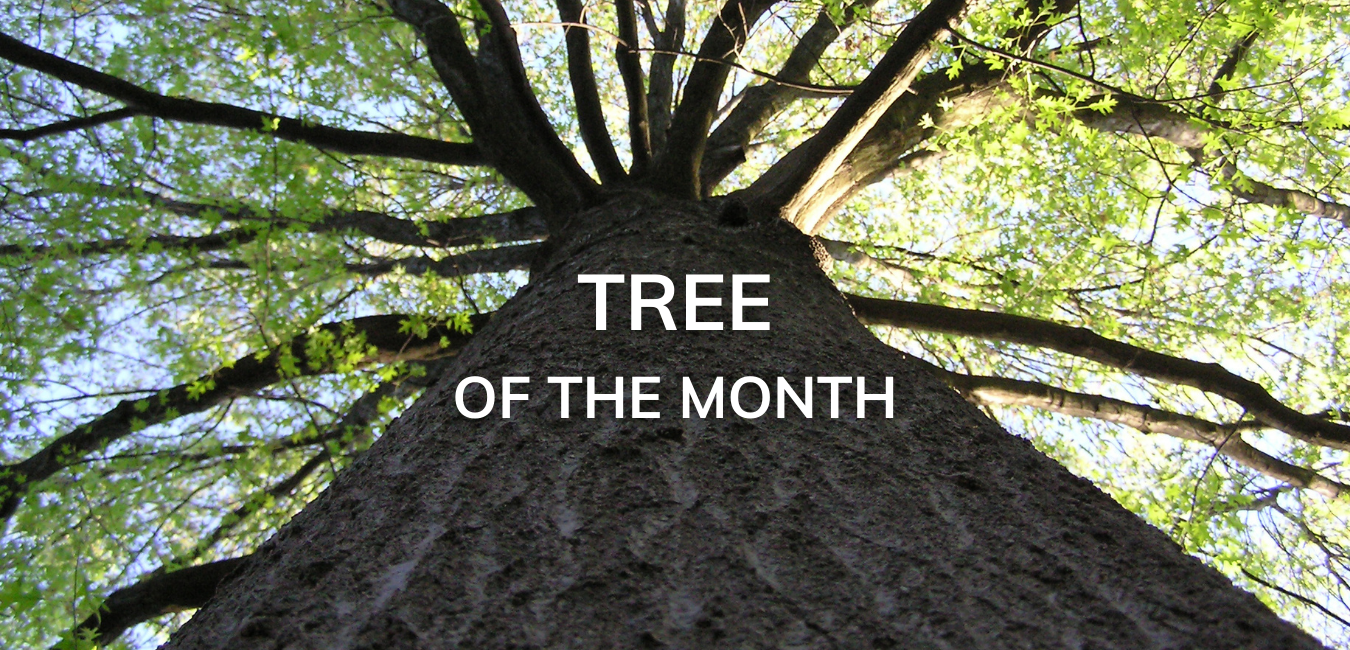
The red oak (or Northern red oak) is found throughout most of eastern North America. It is the provincial tree of Prince Edward Island and the state tree of New Jersey. It is easily recognized by its elegant, dark green, waxy leaves (4 to 7 in. long) that have several pointed lobes with rounded sinuses between the lobes. In the fall, the leaves turn brilliant shades of bronze to red. Able to reach a height of 25 m, the northern red oak can have branches reaching 18 m across when mature, and its trunk is often 30 cm in diameter. On average, red oaks live for 150 years, but can live much longer given ideal conditions.
The red oak grows best when planted in open, sunny areas with acidic soil, but can tolerate a variety of soil and moisture conditions. Generally a fast-growing tree, it can grow about 2 ft per year. When young, red oak trees have smooth bark that develops long, deep ridges as the tree ages. The red oak is a monoecious tree, which means that has both male and female flower parts for reproduction.
With its rounded appearance, dense foliage, and natural hardiness, the red oak is a desirable street and shade tree, and is pollution tolerant. Whether growing in the wild or in the city, it provides many benefits to its environment. Acorns from the red oak are preferred by many birds, squirrels, deer, raccoons, and even black bears. In addition, deer chew on the buds and twigs in wintertime. Cavities and hollow trunks provide both shelter and nesting sites for birds and small mammals. The wood from the red oak is hard, strong, and pink to reddish-brown in colour, and is often used to make flooring, furniture, railroad ties and veneers.
References
https://www.ontario.ca/page/red-oak
https://tidcf.nrcan.gc.ca/en/trees/factsheet/66
https://www.arborday.org/trees/treeguide/TreeDetail.cfm?ItemID=877
http://canadiantreetours.org/species-pages/Northern_red_oak.html
https://treecanada.ca/resources/canadas-arboreal-emblems/northern-red-oak/
Image Source: https://localtreeestimates.com/northern-red-oak/


